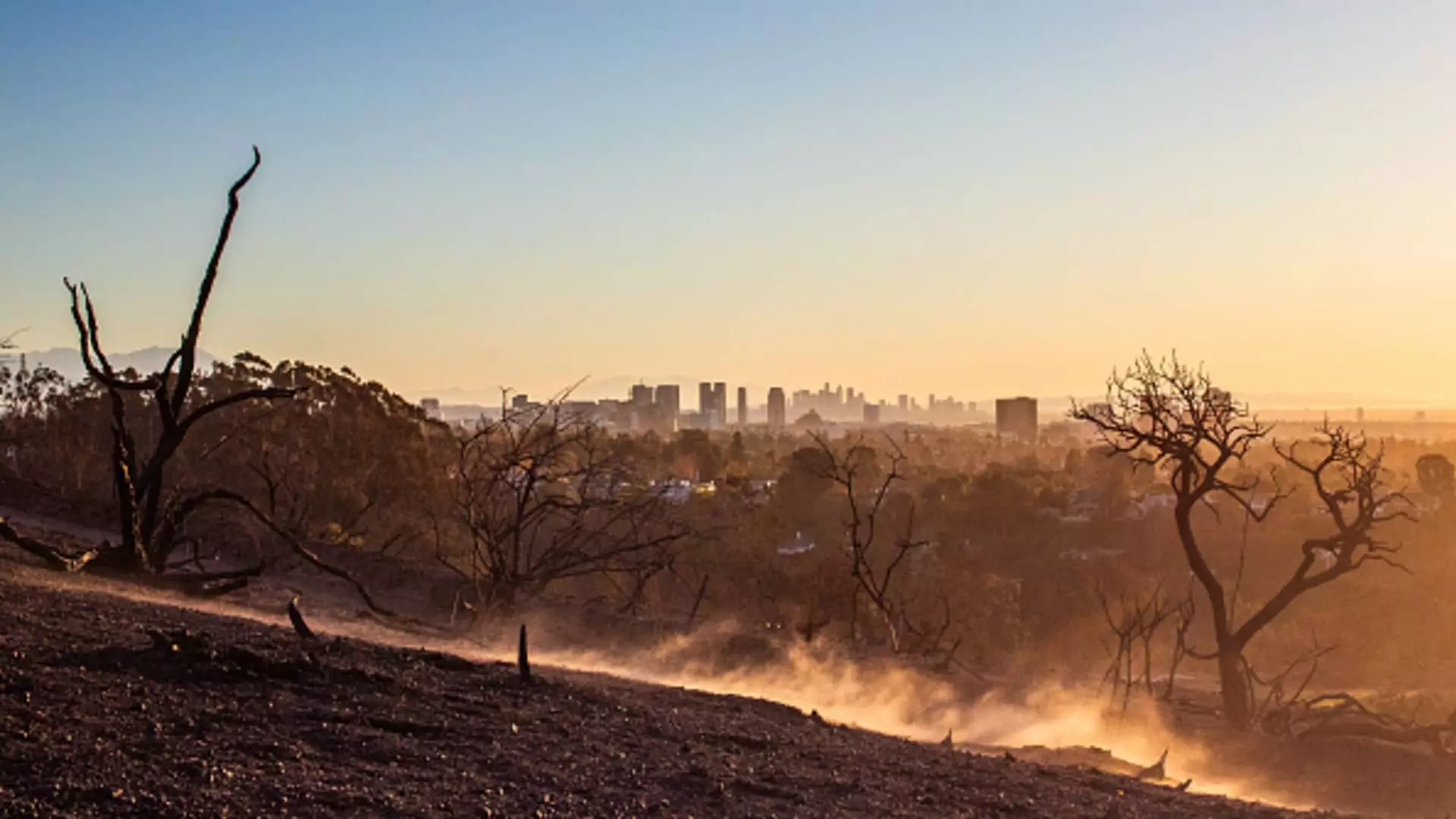Natural disasters, particularly devastating wildfires, have illuminated a grim reality for homeowners across the United States: insurance premiums are on an upward trajectory, and there seems to be no end in sight. California’s recent wildfires in the Los Angeles area serve as a harrowing case study of how environmental catastrophes can not only threaten lives and property but also drastically alter the economic landscape of homeowners’ insurance.
Before the flames in Los Angeles even sparked, insurance premiums were already climbing. The financial aftermath of these wildfires is projected to be staggering, with estimates suggesting that insured losses could exceed $20 billion, as reported by industry analysts from leading financial institutions such as JPMorgan and Wells Fargo. Such figures indicate not just a localized catastrophe but a potential shift in the very foundation of how insurance operates in areas prone to natural disasters.
With natural disasters becoming a common occurrence, homeowners in California face surging costs for insurance, which are only expected to escalate. Patrick Douville, a vice president at Morningstar specializing in insurance analytics, emphasizes the necessity of allowing risk-based pricing in the insurance market. This suggests that as natural disasters become more prevalent, premiums will continue to increase, ultimately making it difficult for many homeowners to afford adequate coverage.
The state of California is already taking steps in this direction. Recent regulations enacted by the California Department of Insurance facilitate rate hikes in exchange for improved coverage in areas susceptible to wildfires. In 2024, some insurers have reported raising rates by as much as 34%. Such increases are alarmingly significant, effectively signaling to homeowners that their current insurance landscape is unstable and fraught with financial risks.
Furthermore, even one claim can drastically impact premiums; data from Insure.com indicates that a single fire claim can raise premiums by an average of 29%, while two claims might increase rates by 60%. This pattern of rising premiums, particularly after significant claims, could effectively push many homeowners into a precarious position where they are either underinsured or unable to afford coverage altogether.
Interestingly, the ripple effects of rising premiums are not confined to California alone. Analysts caution that homeowners outside the state should also brace themselves for possible increases. However, Janet Ruiz from the Insurance Information Institute clarifies that homeowners’ insurance rates are regulated at the state level, meaning that residents in one state are generally shielded from the aftermath of disasters in another.
Nonetheless, the reality of insurance is complex. The interconnectedness of insurance companies operating across state lines means that while one state may not directly incur the costs associated with another’s disasters, the larger market dynamics lead to shifts in pricing based on perceived risk. This raises questions about the overall sustainability of the insurance industry’s current regulatory framework, particularly as climate-related disasters become increasingly common across the country.
As the cost of rebuilding homes escalates—as highlighted by Barrett Insurance Agency’s Michael Barrett—homeowners may find themselves underinsured. Rising rebuilding costs, which have surged to as much as $300 per square foot, emphasize the need for property owners to reassess their policies regularly. Many homeowners renew their existing coverage without accounting for rising construction expenses; consequently, they could face a harrowing financial reality should disaster strike.
A 2023 report from the Consumer Financial Protection Bureau amplifies this concern, revealing that hundreds of thousands of homeowners lack sufficient flood insurance, as standard homeowners and renters policies often exclude flood damage. The potential for severe financial implications due to underinsurance necessitates a proactive approach for homeowners, including periodic consultations with insurance agents or contractors to ascertain current rebuilding costs.
Preparing for the Future
As the frequency of extreme weather events heightens and the cost of living continues to rise, homeowners must remain vigilant in understanding their insurance needs. With the potential for increased premiums and the risk of being underinsured looming large, it is crucial for property owners to do their due diligence. This includes establishing an up-to-date understanding of how much coverage they truly need, particularly in light of recent climatic changes affecting property values and insurance expenses.
The intersection of rising insurance premiums and increasing natural disasters paints a daunting picture for homeowners. As the landscape of insurance evolves, proactive measures and informed decisions will be essential in securing homes against both economic and environmental uncertainties. Without them, many homeowners may inadvertently place their hard-earned investments at risk.

